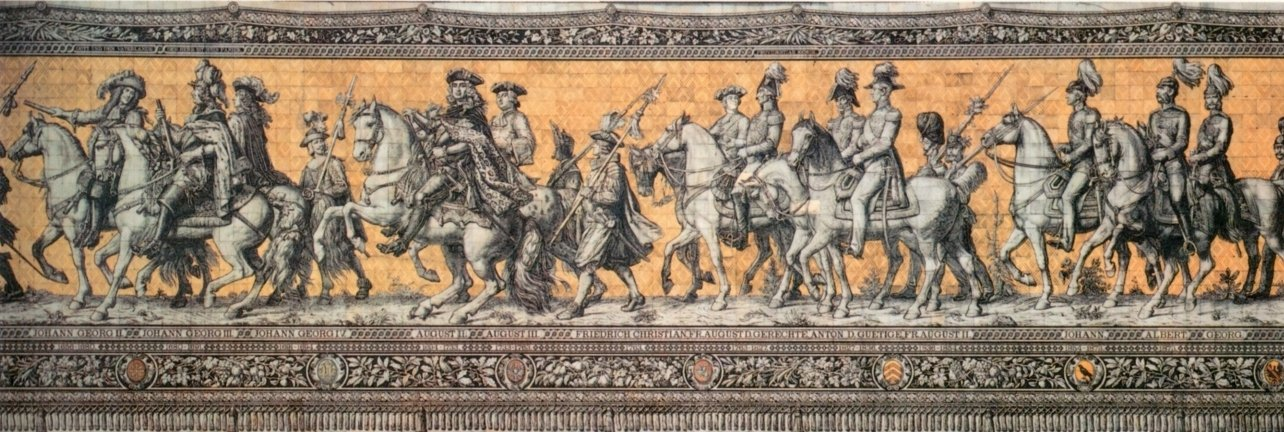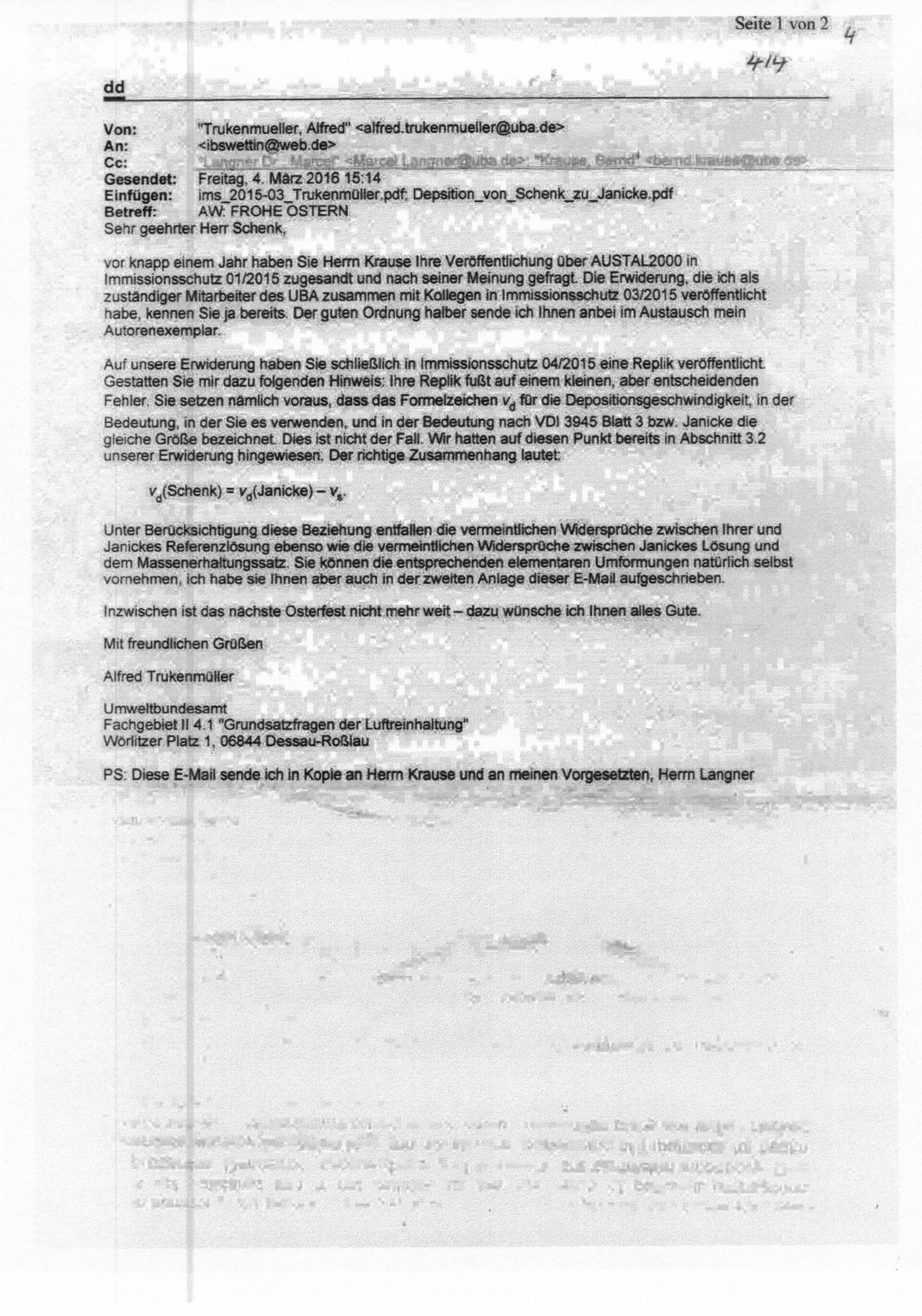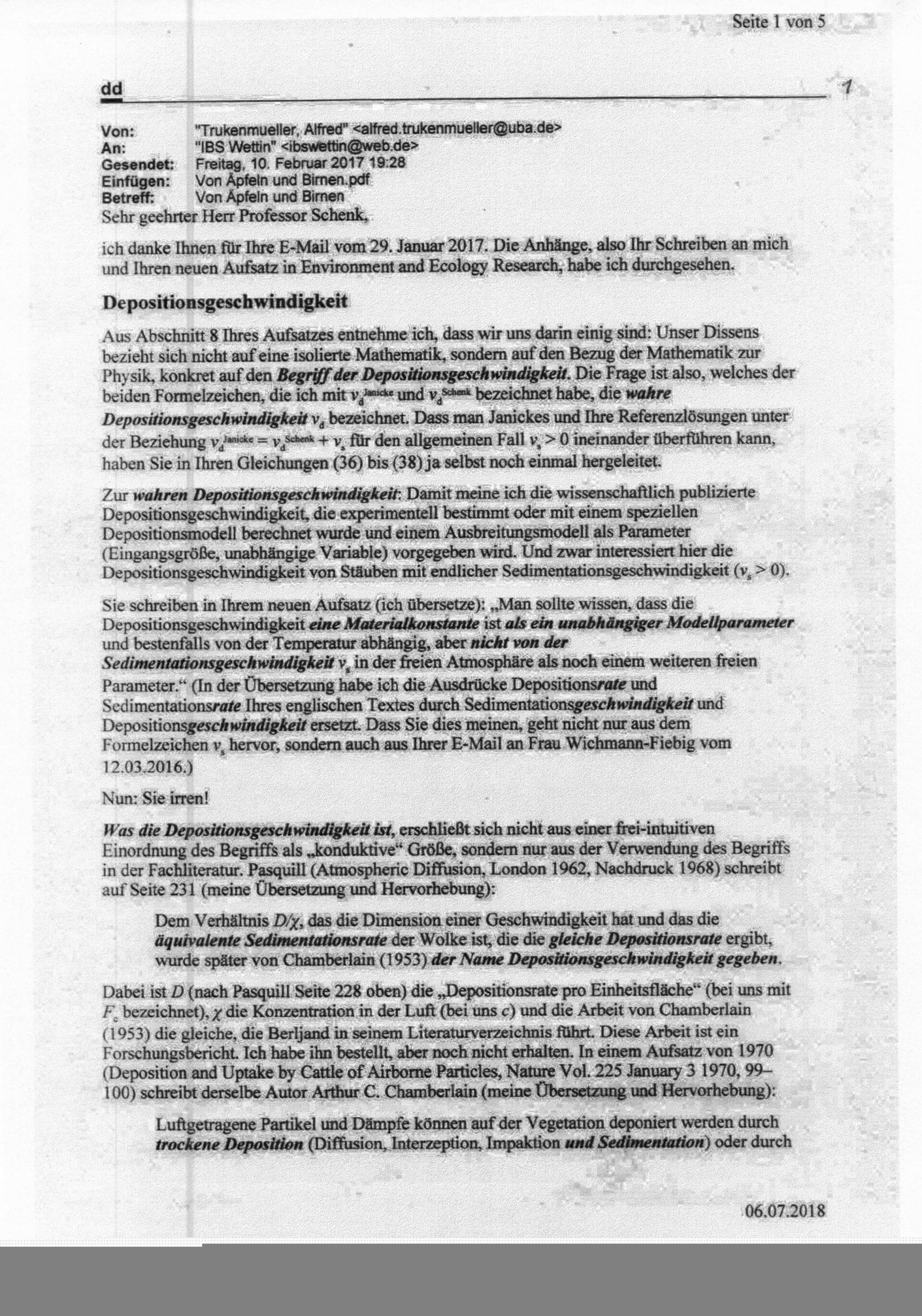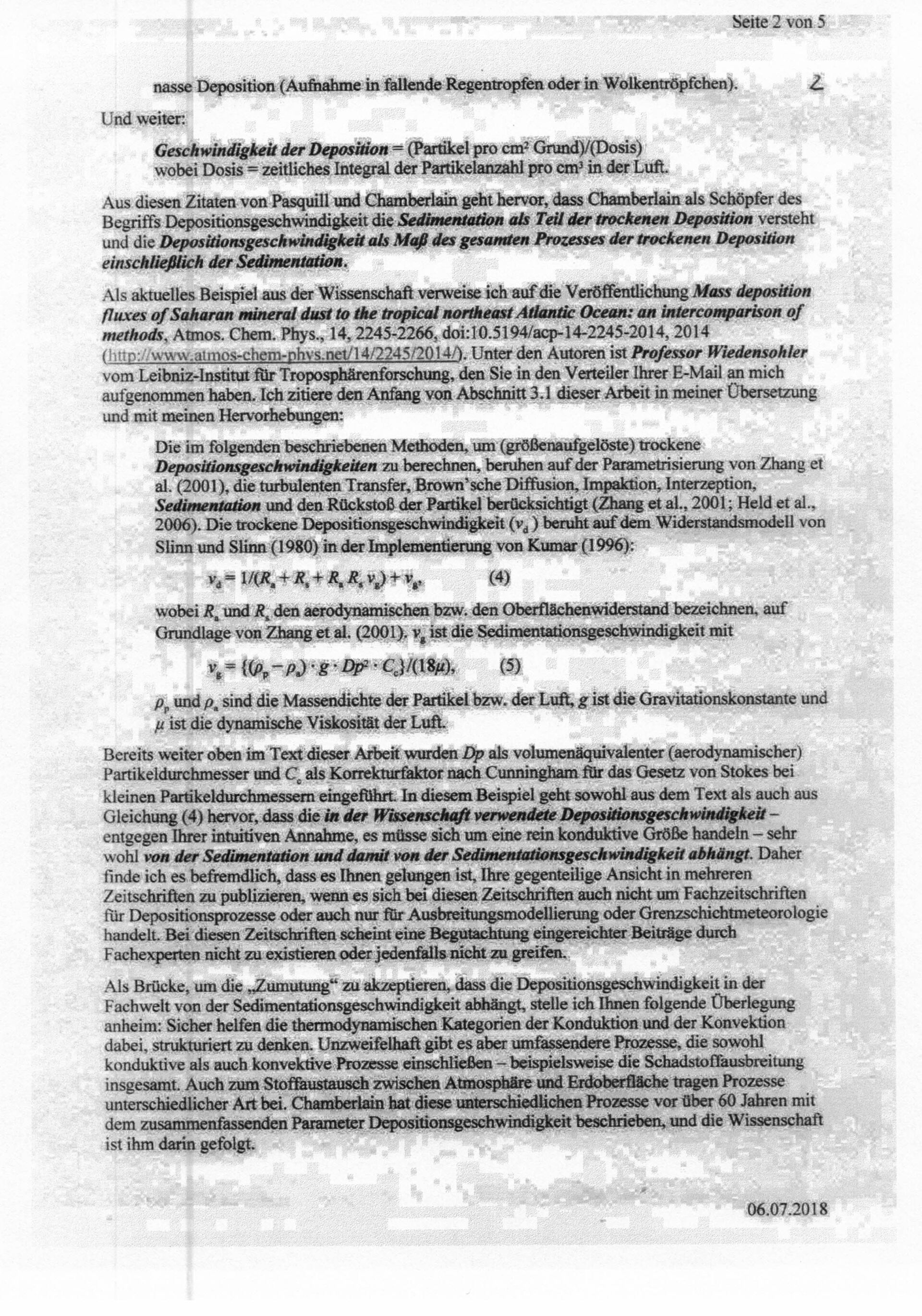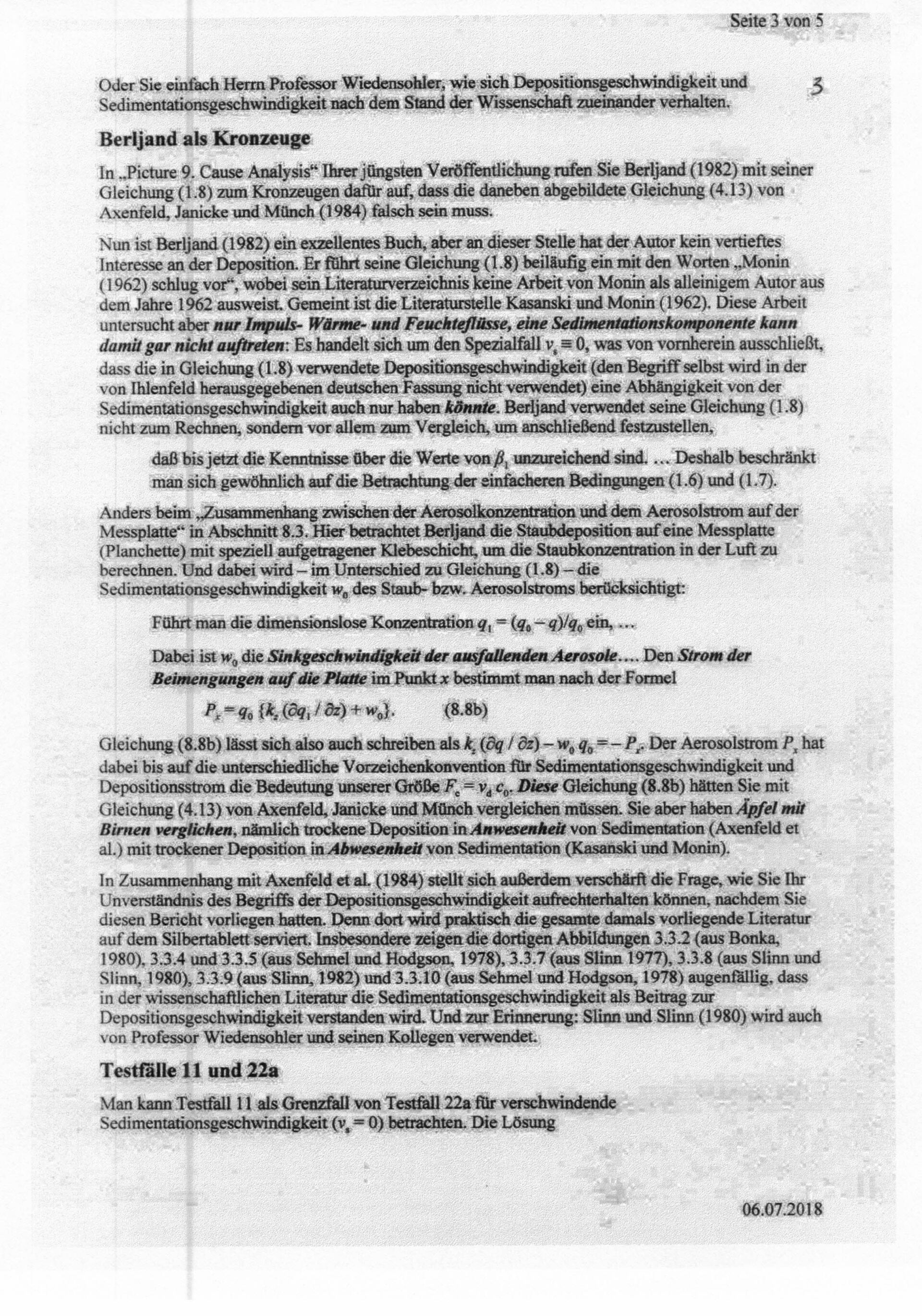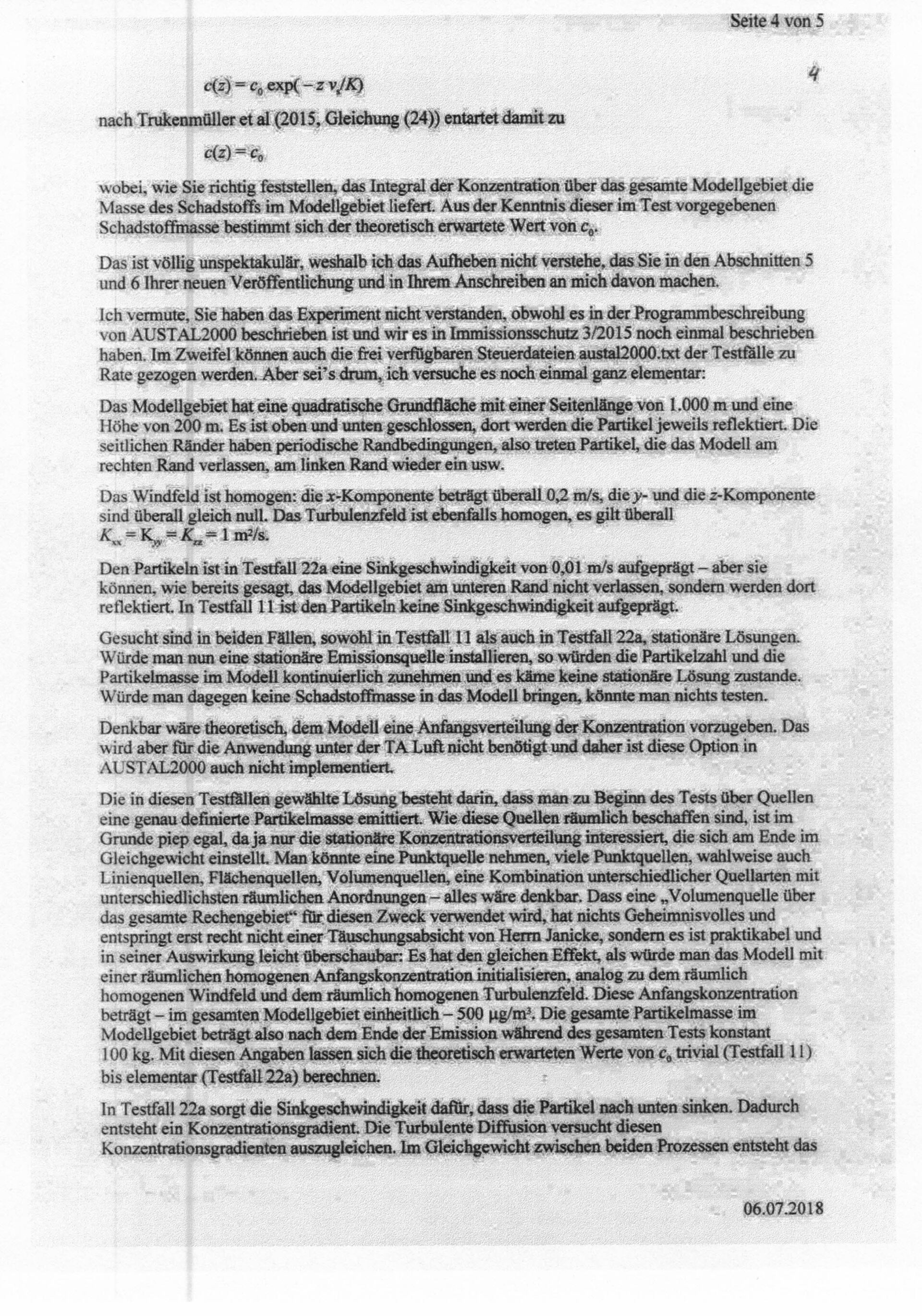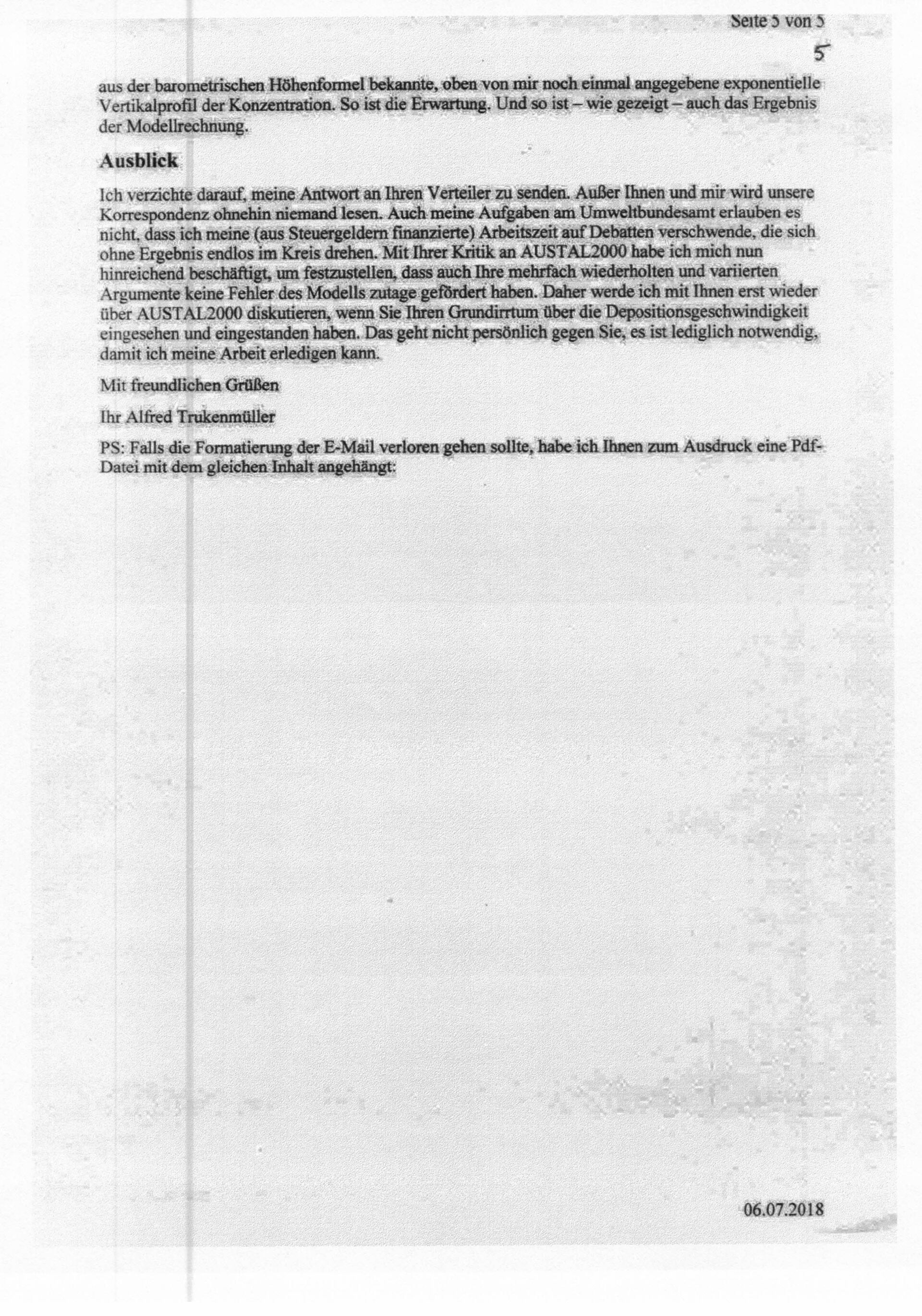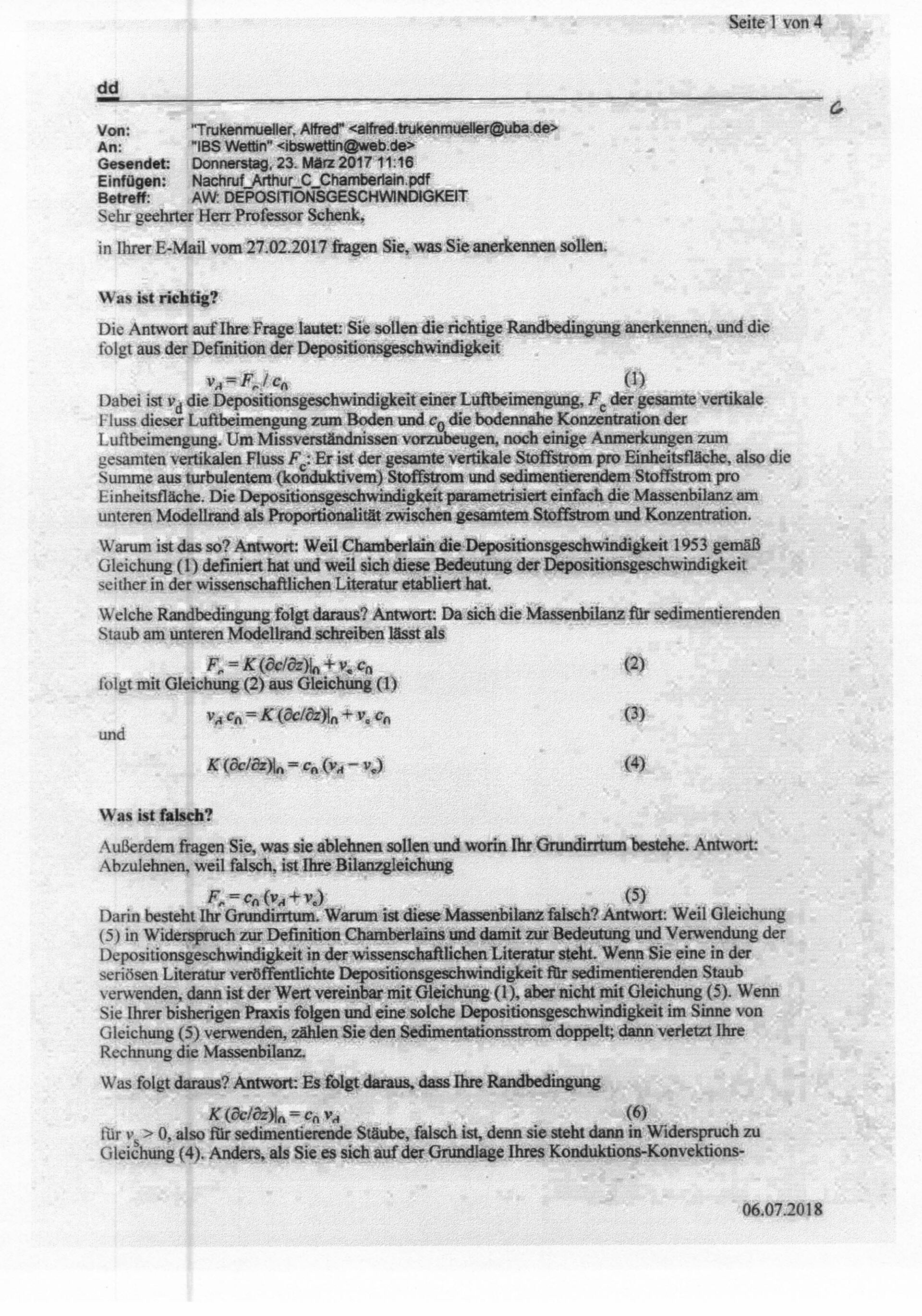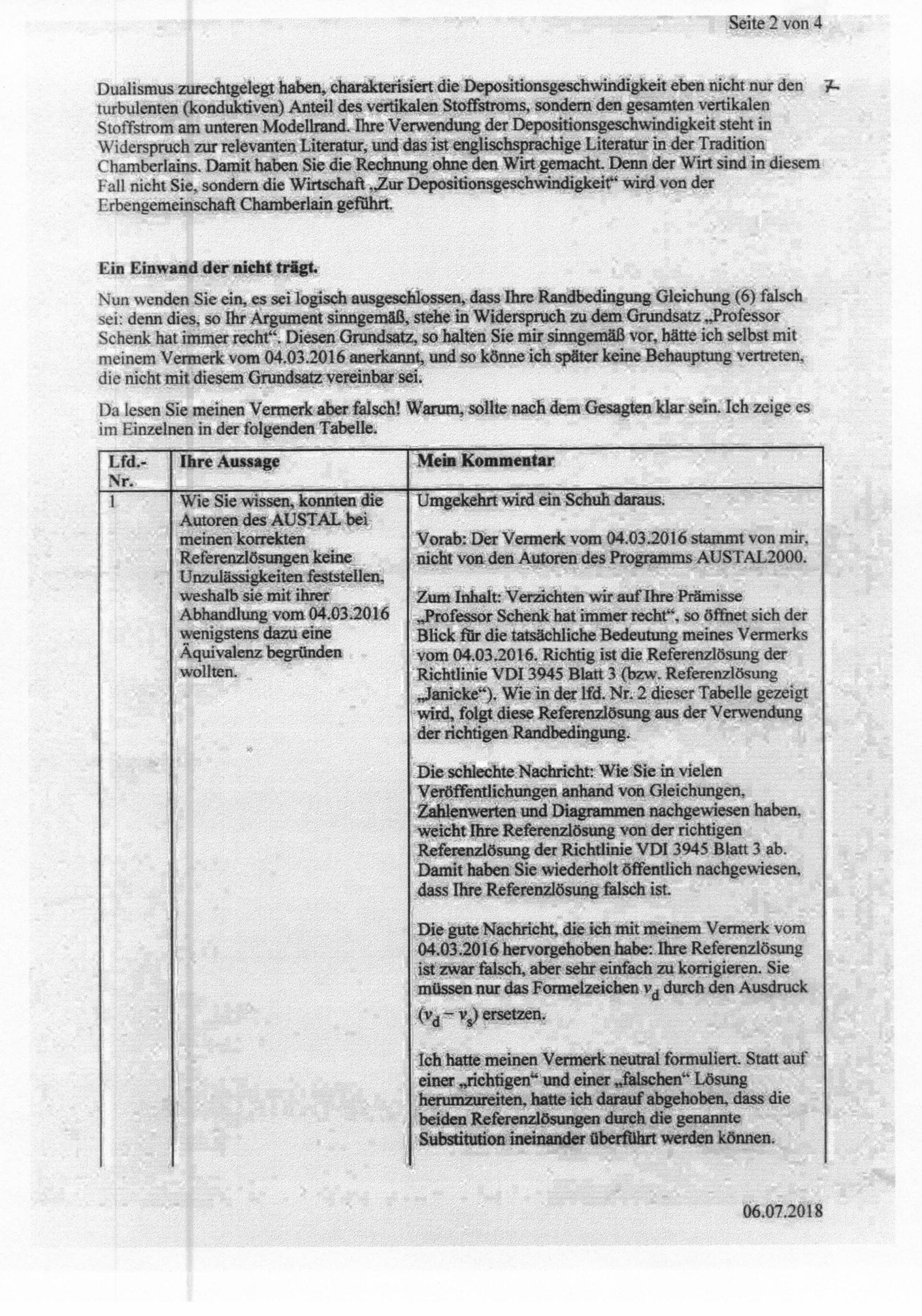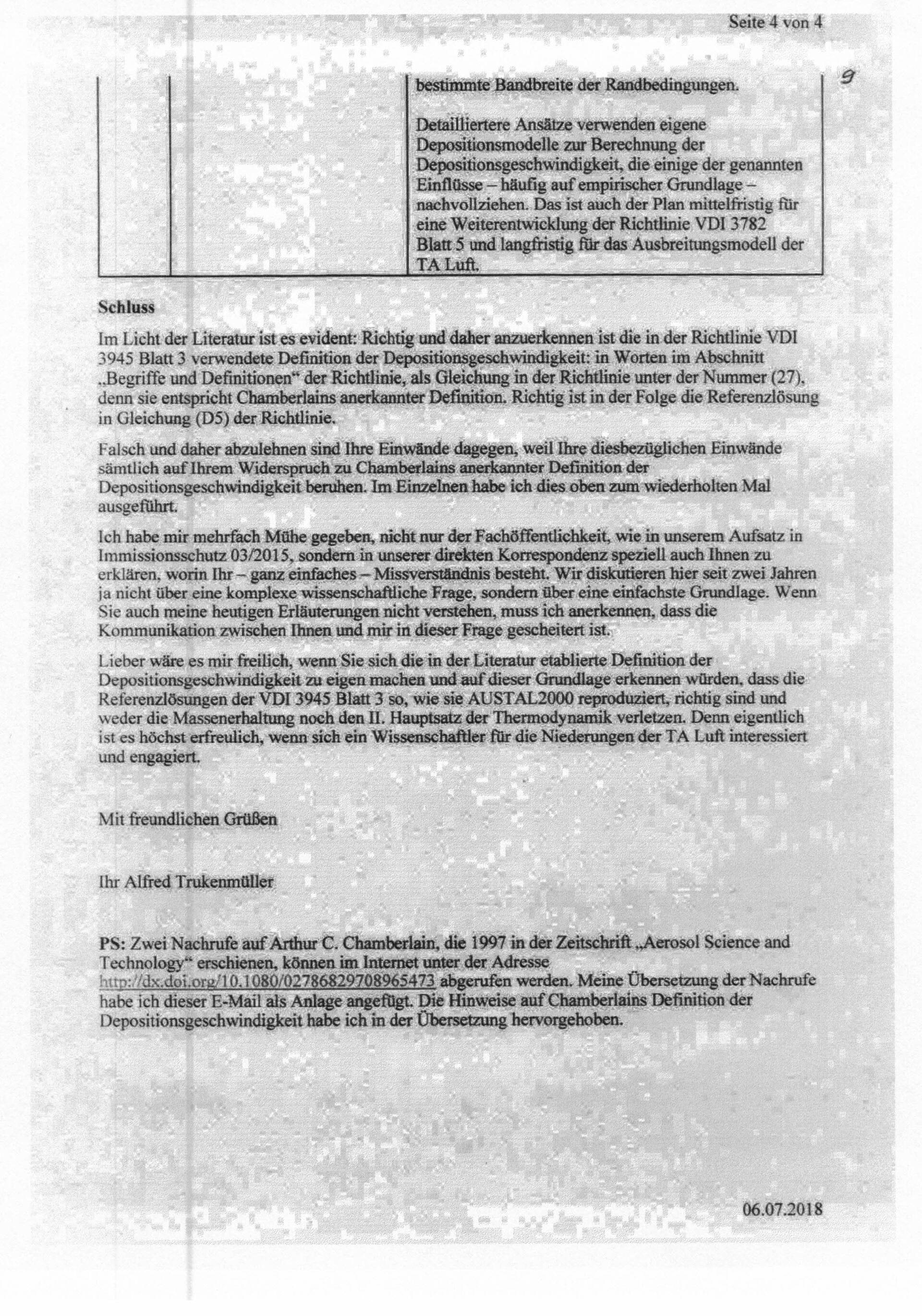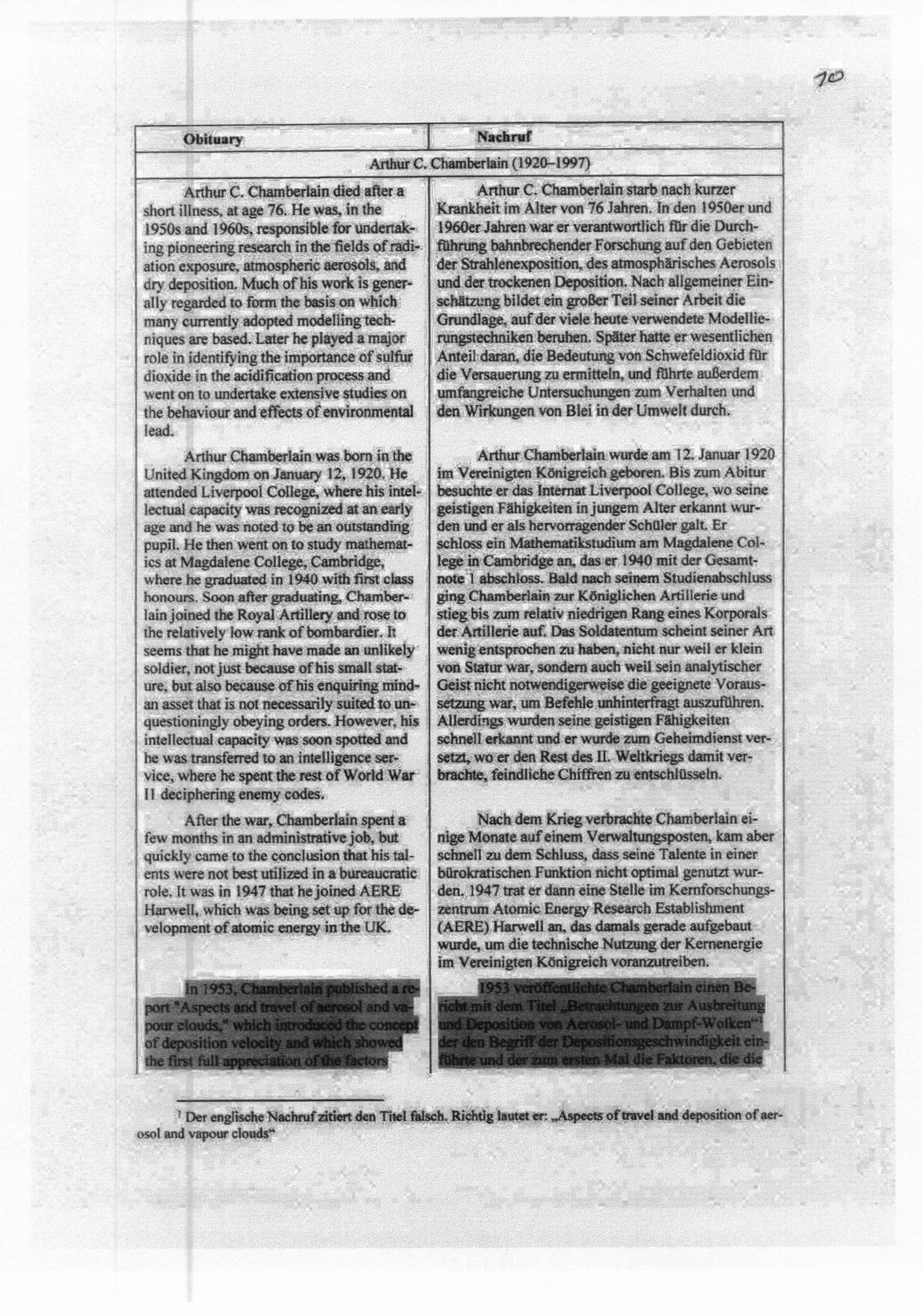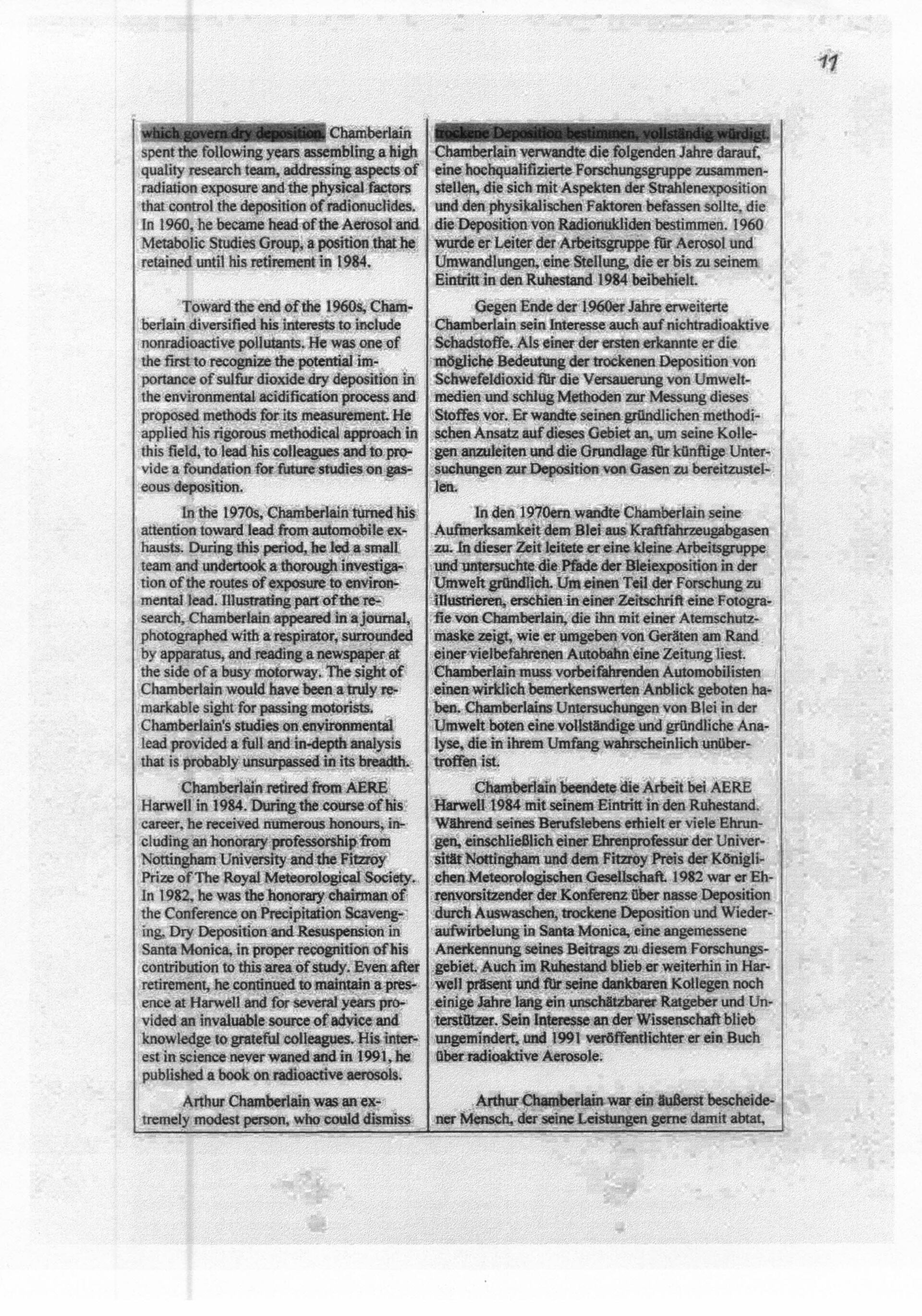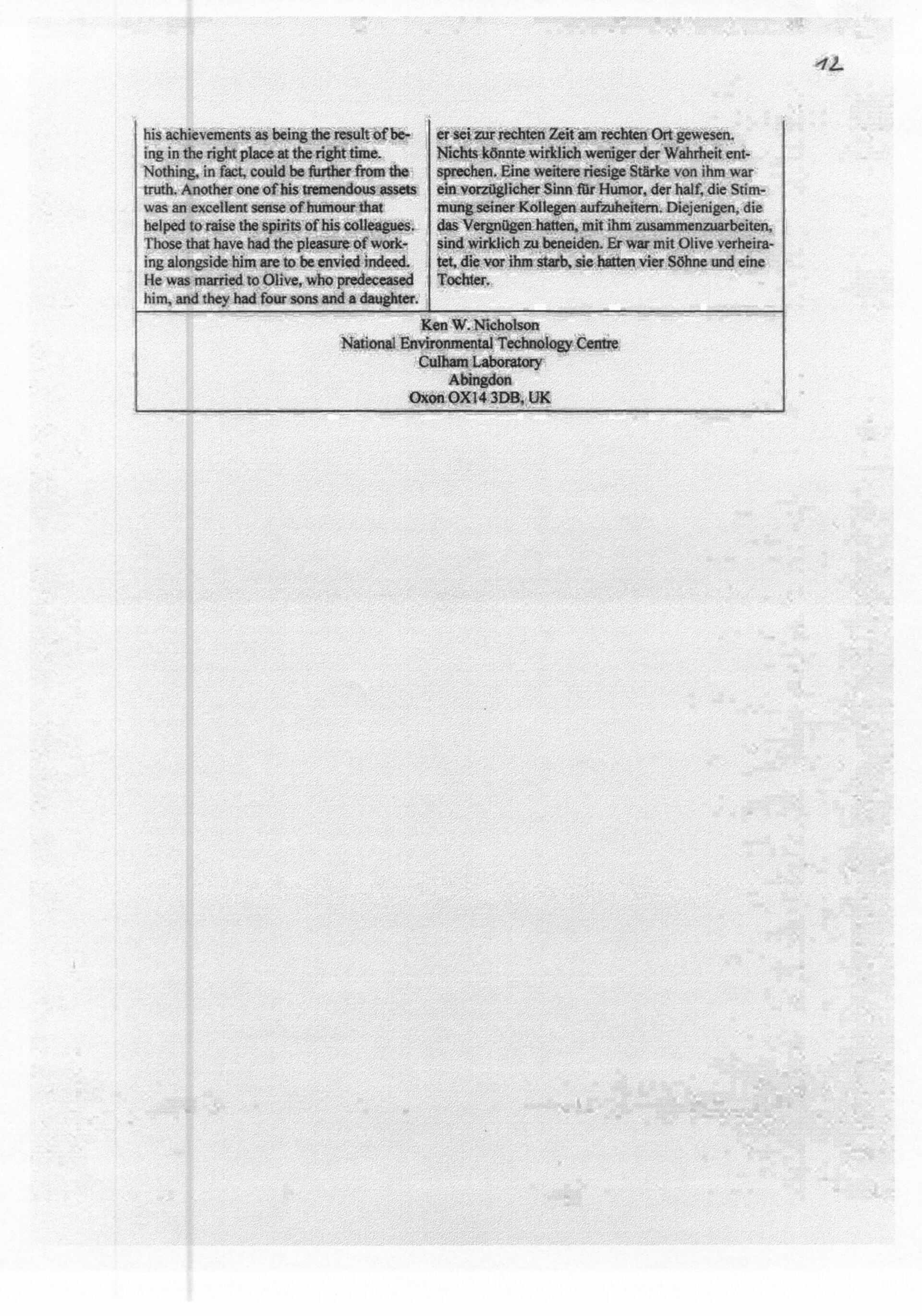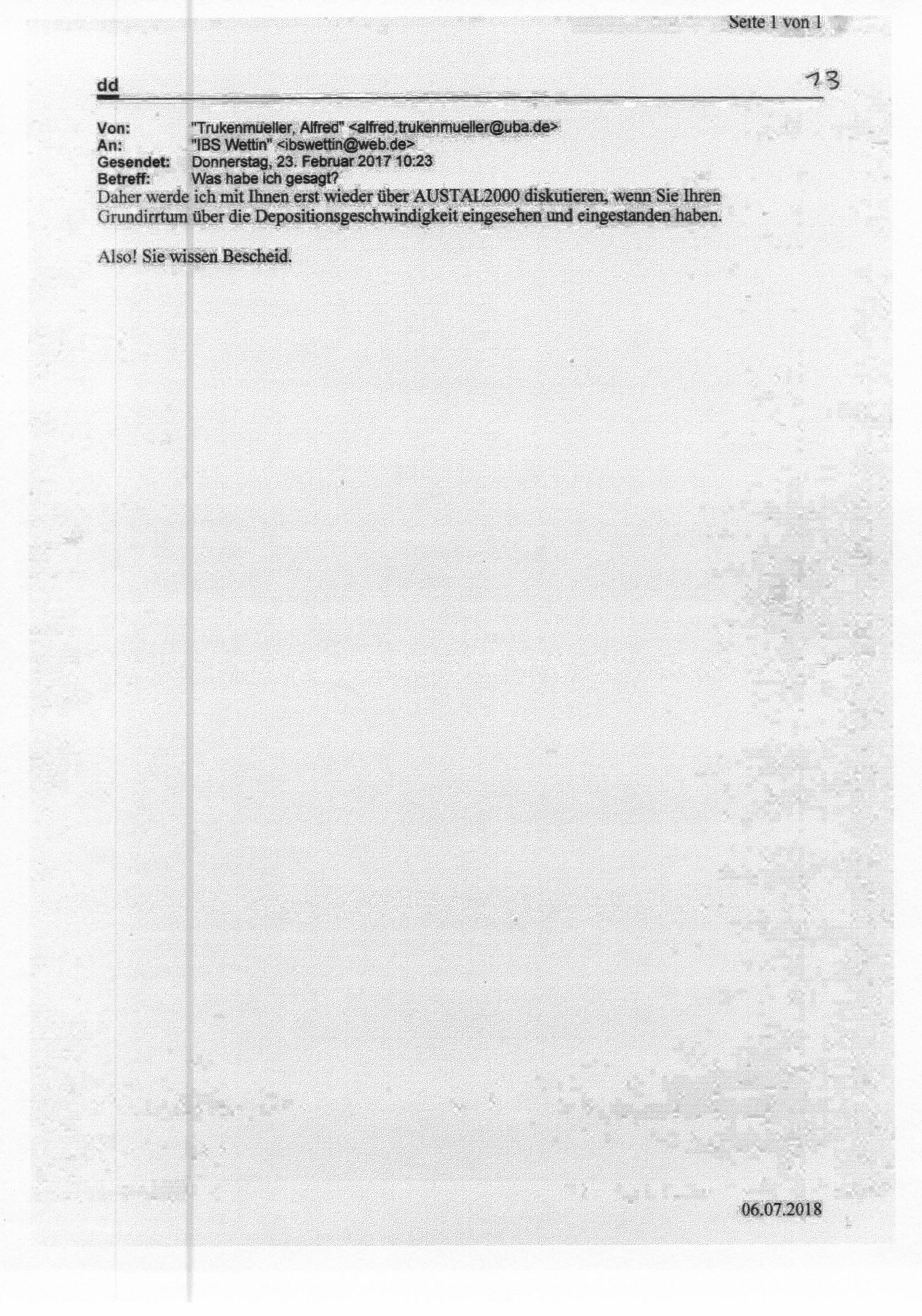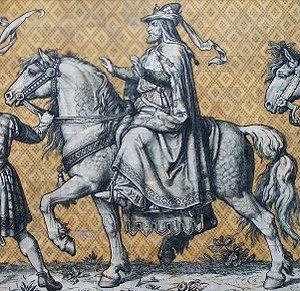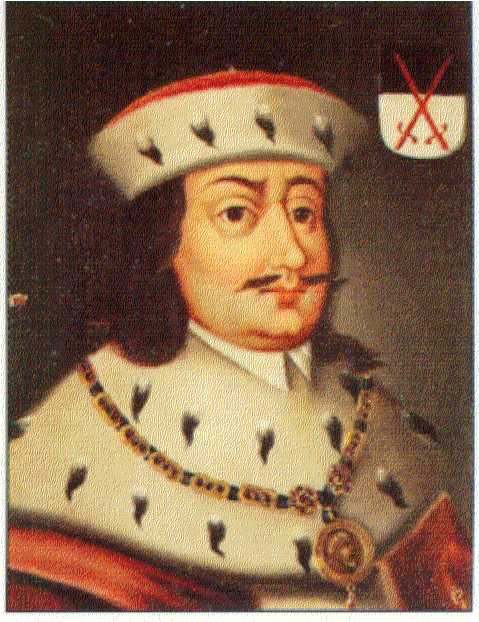The authors of the AUSTAL2000 abuse the reputation of recognized scientists. They claim that other authors would also use Janicke's convention, but this is not true.
The reputation of recognized scientists is allegedly being misused
In connection with the assertion that other scientists would also use the pseudoscientific Janicke convention, one refers in sequence to authors Pasquill, Chamberlein, Berljand, Wiedensohler, Zhang, Slinn, Kumar, Cunningham, Monin, Kasanski, Bonka, Sehmen, Hodgson, Seinfeld, Pandis, Nicholson, Simpson, and Travnikov. Venkatram and Pleim are also to be added. Presumably with the wrong use of reputation and office, the author of Trukenmüller (2017) ignores the state of the art.
The publication Trukenmüller (2017) describes a summary of the exchange of views held with the UBA on the validity of all reference solutions. Because the AUSTAL expansion model is used in all areas of the national economy, such as town and community planning, traffic planning, landscaping and also for hazard prevention, there is a high level of public interest in correctly carried out immission forecasts. For this reason, the public also has a right to participate in the discussions about the validity of this model development. Publications on this are not objectionable. There should also be no lack of clarity. According to the publication Trukenmüller et al. (2015) the Federal Environment Agency (UBA) refrains from further publications and avoids public statements. The goal of the Trukenmüller et al. (2015) silencing critics was not achieved. On the contrary, the authors of the AUSTAL2000 testify that they still adhere to the pseudo-scientific propagation theory of the cars of the AUSTAL2000 in 2015. In a direct exchange of views, the specialist supervisor of the AUSTAL2000 and the person responsible for dispersion calculations in the UBA speaks out. In Trukenmüller (2017) he defends the false propagation theory of the authors of the AUSTAL2000 and becomes increasingly entangled in contradictions. It turns out very quickly that the author knows very little about the physics and mathematics of the spread of air pollutants. For example, he does not consider the first integration constant of the relevant mass balance equation to be unchangeable, but rather as a field function that can be kept variable at will, in order to be able to derive an alleged connection between the deposition and sedimentation velocities. The fact that both speeds are material constants is disputed, to name just one example. The authors of AUSTAL2000 deny the validity of Berljand's propagation theory and fatefully follow the pseudoscientific Janicke's propagation theory and the allegedly valid Janicke's convention, according to which deposition means loss and not breaking up. In further discussions, the specialist guide for the AUSTAL2000 relies more on the reputation of other authors than on its own competence. So he wants to distract from his own ignorance. This formulation is not very friendly. However, it is true in every respect and not only affects the content, but also the form of Trukenmüller (2017).
As far as the content is concerned, in connection with the definition of the rate of deposition, it refers in sequence to 22 nationally and internationally recognized authors. These scientists have undoubtedly earned various lasting merits in the field of modeling the spread, deposition and sedimentation of air pollutants and can refer to an elevated reputation. However, they would strongly object to assuming that their research on the claims in Trukenmüller (2017) were equivalent. In the case of the first and last of the cited authors, the ignorance of the authors of the AUSTAL2000 can easily be demonstrated. Pasquill (1962), for example, is an excellent description of atmospheric diffusion, but in the relevant section “6.2 Deposition of airborne material” on 14 pages and 19 formulas, not a single statement can be found with which one can find the violation of the Mass conservation and the Janicke Convention could justify. The ignorance of the authors of the AUSTAL2000 consists in the fact that they are not able to develop a suitable thought model with the excellent physics described there, which would be accessible to a consistent mathematical description. In the last of the cited cases, the author of this website dealt extensively with the publication Venkatram et al. (1999) in Schenk R (2018b). The ignorance of the authors of the AUSTAL2000 consists in the fact that they did not understand that the in Venkatram et al. (1999) found the connection between sedimentation and deposition only for the special case of a vanishing soil concentration, c0 = 0, which consequently with Fc = vd × c0 = 0 not only calls into question all dispersion calculations, but also all other explanations by the authors of the AUSTAL2000 on the validity of the Janicke Convention. According to the authors of the AUSTAL2000, Fc here means the total emission in the study area. It is also not to be assumed that the authors further cited in the list believe that “... a column standing on the surface of the earth, which contains the material suitable for deposition, runs dry through deposition”, as in Axenfeld et al. (1984) and follow the pseudoscientific propagation theory of the authors of the AUSTAL2000. Also in the work of Simpson et al. (2012) and Travnikov et al. (2005) there is no indication that one could infer the validity of Janicke's convention. The charge of ignorance is well founded.
With regard to form, the style and expression of Trukenmüller (2017) snub every German authority.
literature
Axenfeld * p * F, Janicke L, Münch J (1984)
Development of a model for
Calculation of the dust precipitation.
Environmental research plan of the
Federal Minister of the Interior
Air pollution control, research report
104 02 562, Dornier System GmbH
Friedrichshafen, on behalf of
Federal Environment Agency
Pasquill*p* F (1962) Atmospheric diffusion:
The dispersion of windborne material
from industrial and other sources.
London from Nostrand
Schenk*p* R (2018) Deposition Mans
Storage And Not Loss. Environmental
Systems Research16 p: 1-14
Travnikov * p * O, Ilyin I (2005) Regional
Model MSCE-HM of Heavy Metal
Transboundary Air Pollution in Europe.
EMEP/MSC-E Technical Report 6/2005
Trukenmüller * p * A, Bächlin W, Bahmann
W, Forester A, Hartmann U,
Hebbinghaus H, Janicke U, Müller WJ,
Nielinger J, Petrich R, Schmonsees N,
Strotkötter U, Wohlfahrt T, Wurzler S
(2015) Reply to Schenk's criticism
AUSTAL2000 in immission control 01/2015.
Immission control 03/2015 S: 114 - 126
Trukenmüller * p * A (2017) Opinions
of the Uweltbundesamt from 10.02.2017
and 23.03.2017. Dessau-Rosslau S: 1-15
Venkatram * p *, A., Pleim, J., 1999. The
electrical analogy does not apply to
modeling dry deposition of particles.
Atmospheric Environment 33, pp. 3075-3076
Simpson * p *, D., Benedictow, A., Berge, H.,
Bergström, R., Emberson, L., D., Fagerli, H., Flechard, C., R., Hayman, G., D.,
Gauss, M., Jonson, J., E., Jenkin, M., E., Hyiri, A., Richter, C., Semeena, V., S.,
Tsyro, S., Tuovinen, J., P., Valdebenito, A., Wind, P., 2012. The EMEP MSC-W chemical
transport model – techical description.
Atmos. Chem. Phys. 12, pp. 7825-7865


